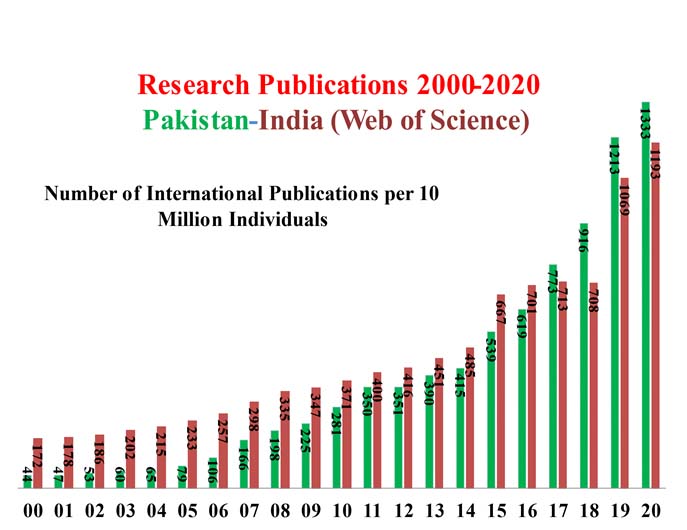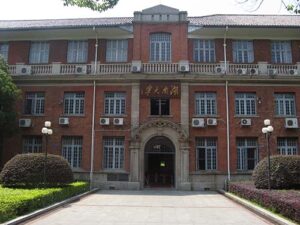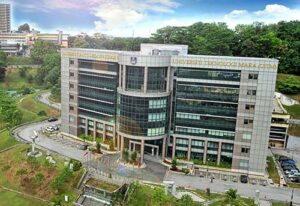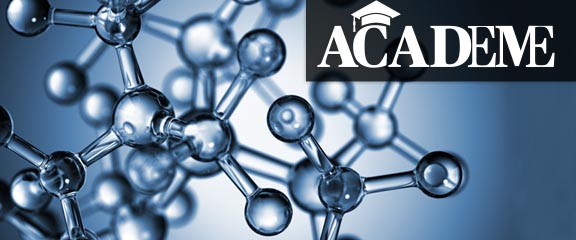Pakistan’s public sector universities are going through their greatest crisis in history, with many lacking funds to even pay salaries to their staff. Some have taken bank loans, while others have utilised the provident funds of the employees. The recurring budgets of the universities have remained frozen for the last four years at about Rs.65 billion, whereas their operational costs have more than tripled because of the rise in prices of electricity, gas and other utilities, salaries, and cost of imports of chemicals and consumables due to the rupee devaluation. Therefore, they are left with no choice but to drastically increase the tuition fee or close down completely — and this may well happen in the near future.
Pakistan made remarkable progress in higher education after the Higher Education Commission was established in 2002. I was appointed as its first chairman and during the six-year period (2002-2008), remarkable progress was made as the HEC introduced hundreds of visionary programmes geared to improve the quality of education, increase access to universities and tailor the education to national needs and international demands. As a result, within five years of the HEC’s establishment, several Pakistani universities became ranked among the top 500 of the world in the Times Higher Education-Quacquarelli Symonds (THE-QS) World University Rankings with the National University of Science and Technology, Islamabad, leading the way, being ranked at No. 350 in 2009 in general university rankings. In the field-wise rankings, the NUST (Islamabad) was ranked at 273 in the world and the UET (Lahore) at 281 in engineering sciences, while the Karachi University was ranked at 223 (in natural sciences).
These remarkable developments in the higher education sector, triggered by the higher education reforms introduced by us, led to an unprecedented growth in high quality research publications in Pakistan so much so that we have now caught up with India in per capita research output. In the year 2000, Pakistan had only 44 international research publications per 10 million population versus 172 from India. By the year 2017, we had overtaken India due to a 400% increase in high quality research in universities of Pakistan according to Web of Science data, which has no parallel in any other country of the world (Fig. 1)!
Growth in International Research Publications in Impact Factor Journals
Fig.1: Research publications per capita in international journals, Pakistan versus India. Green bars indicate the number of international publications from Pakistan per 10 million population during the year 2000 (extreme left) to the year 2020 (extreme right). The red bars show the same data for India. As can be seen, Pakistan overtook India in the year 2018. The data is taken from the Web of Science and was kindly supplied by Prof. Raheel Qamar, former Rector COMSATS.

How did this transformation occur? The focus of the HEC reforms was on the creation of high-quality faculty, as that is the essential pillar on which quality of higher education rests. Our focus was not to just create new PhD programmes, but to first improve the quality of teaching and research through development and absorption of high-quality faculty. Therefore, a huge amount of effort was made and funds spent on identifying the brightest young men and women through a highly competitive three-tier selection process, sending them for PhD training to top universities abroad, and attracting them back to Pakistan with generous research funding and excellent salaries.
The world’s largest Fulbright programme was initiated by us with half the funding coming from the HEC. Some 11,000 students have been sent abroad for PhD and postdoctoral studies and for sandwich PhD programmes as a result of these efforts. However, sending abroad was only half the challenge. It was equally important to attract them back to Pakistan so that they could contribute to the national development. A number of measures were introduced to facilitate this. Firstly, the salary structures were dramatically changed under a new contractual “tenure track” system of faculty appointments that was introduced. This involved excellent salaries for professors, about four times those of Federal Ministers, but linked to six international performance assessments, at assistant, associate and full professor levels before permanency of tenure could be granted. This allowed a mechanism for removal of weak faculty members.
Secondly, it was ensured that they would have jobs on arrival. Thirdly, the returning students were offered research grants of up to $100,000 for which they could apply one year before their return to Pakistan. They were also given free access to international literature through the digital library established by the HEC. Under a novel scheme, again the first in the world, all researchers in public sector universities were granted free access to sophisticated instruments installed anywhere in the country with the analytical charges being paid by the HEC. The impact of these measures was huge with 97.5% scholars returning to Pakistan on completion of their studies.


The measures introduced to improve quality of research included the following:
A) Split PhD programmes were initiated that involved collaboration/co-supervision and oversight with professors in good foreign universities.
B) Extensive coursework requirements were introduced so that the basic deficiencies in the earlier education of students could be properly addressed.
C) It was made mandatory that PhD thesis assessment was exclusively carried out by good foreign professors to ensure high quality neutral external assessment.
D) The requirement of at least one publication in a recognized international journal prior to PhD thesis submission was introduced, which ensured that the PhD work carried out was of international standard.
E) To control the menace of cheating and copying text from other published sources, plagiarism check through special software was made mandatory prior to M.Phil. or PhD. Thesis submission. This software (Turnitin / Ithenticate) can catch text copied from other sources in seconds and identify exact passages or lines that had been copied along with the original source from which the material was copied.
F) A network of Quality Assurance Cells was set up in universities to address all aspects of quality assurance including teaching, curriculum and course content, assessment methodology and international compatibility of standards as per Bologna protocol.
The access to higher education was very limited back in 2002 with only 2.6% of students between the age group of 17-23 benefiting from college or university education. This access is above 50% in most advanced countries and above 80% in Korea. Therefore, at least 40 new universities were established across the country to meet this challenge and the access thereby increased from 2.6% to about 9% by 2008. We still have a long way to go, as in India, this access stands at above 30% of the eligible age group. A number of good universities emerged as a result of the substantial investments made in higher education during 2002-2008. These included NUST and COMSATS in Islamabad, the IBA in Karachi and Sukkur, the Virtual University in Lahore and the Balochistan University of Information Technology and Management Sciences in Quetta and many others. A decision was also taken by us, and approval taken from the Cabinet in 2005 to support private sector institutions, which led to a good engineering faculty being established in LUMS Lahore.
Besides quality and access, the 3rd area of focus of the HEC was that of relevance of the education being imparted to national needs and international demands. Therefore, the HEC regularly revised the curricula in close consultation with industry and other end-users and established numerous programmes to strengthen university-industry linkages. Technology parts were established in many universities and special priority was given to the information technology sector. The improvement in the IT infrastructure led to the establishment of a nationwide digital library under the auspices of the Pakistan Education Research Network (PERN) with some 25,000 international journals and 65,000 textbooks from 220 international publishers.
A comprehensive evaluation and study of the HEC programmes undertaken during 2003-2008 was carried out by the USAID, which was published in 2009 in a 151 page report. The USAID team was led by Dr. Fred M. Hayward, an experienced international education consultant, and top US experts (https://web.archive.org/web/20100227024357/http:/www.bc.edu/bc_org/avp/soe/cihe/newsletter/Number54/p19_Hayward.htm). The report concluded that the HEC had made very significant progress in each of the three critically important priority areas identified by HEC, quality, access and relevance, within a short span of 6 years.
The report summarized its observations with the following remarks:
“The long overdue transformation of higher education in Pakistan under the leadership of the HEC has made solid progress over the last five years. What is most impressive is the breadth of reforms – faculty development, quality assurance, infrastructure rehabilitation, information technology staff training, research facilities, academic publications, increased access, improved accountability, expansion of campuses, and improved salaries and working conditions – and its insistence on quality improvement throughout the system.”
An important factor to judge the quality of research of any country is the number of international citations that research publications of that country attract. The annual growth in citations of the research publications of Pakistani authors by other international academics has been truly remarkable. According to the 2023 The World University Rankings report, Pakistan is now ranked No.4 in the world in terms of the rate of rise of citations of Pakistani publications by other international scientists. Thomson Reuters, the world’s leading news agency, applauded the fantastic progress made by Pakistan in an article entitled “Another BRIC in the Wall” in which it compared the increase in the percentage of highly cited quality articles in reputable international journals from Pakistan with those in Brazil, Russia, India and China and concluded that Pakistan was ahead of these countries in the rate of rise in the quality-research articles.
A review of the Higher Education system of Pakistan was also carried out by Prof. Michael Rode, Chairman of the United Nations Commission on Science, Technology and Development, and Professor at the University of Innsbruck in Austria, who visited Pakistan on a number of occasions. Applauding our efforts, he wrote in 2008:
“Around the world when we discuss the status of higher education in different countries, there is unanimity of opinion that the developing country that has made the most rapid progress internationally in recent years is Pakistan. In no other country has the higher education sector seen such spectacular positive developments as that in Pakistan during the last six years (https://www.dawn.com/news/866703/higher-education-commission-affair) Unquote. Other independent and authoritative reports, praising the outstanding performance of HEC, were published by the World Bank and the British Council. The famous German scientist Wolfgang Voelter wrote an article praising these developments (https://www.dawn.com/news/861940/the-golden-period). The world’s leading science journal, Nature, praised these programmes in four editorials (https://www.nature.com/articles/4541030a), and they were considered as a model for other developing countries to follow, in a book published by the world’s most famous scientific society, The Royal Society (London), entitled “A New Golden Age” (https://royalsociety.org/~/media/royal_society_content/policy/publications/2010/4294971224.pdf).
The progress made in Pakistan between the 200-08 rang alarm bells in India. Prof. C.N.R. Rao (Chairman of the Indian Prime Minister’s Scientific Advisory Council) made a detailed presentation to the Indian Prime Minister Mr. Manmohan Singh and his cabinet on 22nd July 2006 about the Higher Education Commission, according to Hindustan Times, entitled “Pak Threat to Indian Science”. (https://www.hindustantimes.com/india/pak-threat-to Idianscience/storym8qQVLViS1AeRFGPxazmvK.html). The article began with the sentence “Pakistan may soon join China in giving India serious competition in science.”
(https://www.hindustantimes.com/india/pak-threat-to-indian-science/story-RKhumMj54uzKtA8be6FxI.html), Neha Mehta, “Pak Threat to Indian Science”, Hindustan Times, 23 July 2006). As a result India decided to close down its UGC and established the Higher Education Commission of India (HECI) modelled after Pakistan.
I was given many international awards for bringing about revolutionary changes in the science, technology and higher education sector, including Nishan-Imtiaz, the highest national award. The Austrian Government conferred its high civil award “Grosse Goldene Ehrenzeischen am Bande” (2007) on the author for transforming the Higher Education sector in Pakistan. The TWAS (Academy of Sciences for the Developing World, Italy) Award for Institutional Development was conferred on the author in October 2009. A number of institutions have been established in my name in China and Malaysia.
As a result of my recent efforts, a number of foreign engineering universities are now being set-up in Pakistan, largely in collaboration with Austria and China. The first of these, the Pak Austria Fachhochschule in Haripur Hazara is functional with 100% Ph.D. level faculty. A second is under construction in Sialkot. The heart of these universities is a technology park devoted to developing high tech products for industry, so that our exports in high value-added goods could grow exponentially. It needs to be understood by our leaders that natural resources now have diminishing importance. It is only through giving the highest national priority to education, science, technology and innovation that we can emerge from the quagmire into which we have sunk.



